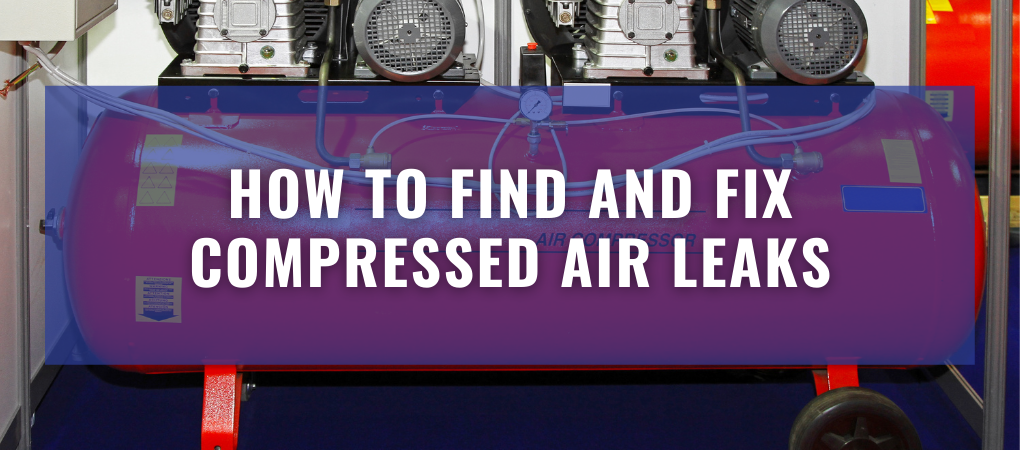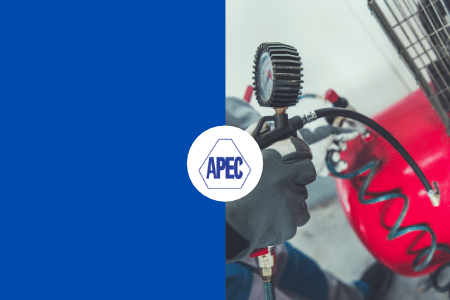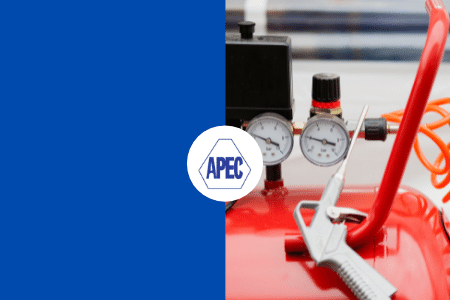
Compressed Air Leaks
It is pretty common for compressed air systems to develop leaks. Leaks result in wasted energy, and if not fixed on time, they can be detrimental to both the system and its output. Therefore, despite being costly, any leak detected should be fixed at the soonest time possible.
However, most people do not even know how to detect leaks. For this reason, this article will compile the different ways of detecting leaks in compressed air systems. Some of the leak detection methods outlined in the article include:
• Listening and using hands
• Using soapy water
• Candle flame test
• Using an ultrasonic acoustic detector
Besides, the article will include some of the best ways to fix these leaks and avoid them in the future.
How to Detect Leaks in Compressed Air Systems
Different methods can be applied to detect leaks, depending on the equipment used. Better still, a qualified air technician will undoubtedly assist in detecting and diagnosing the leaks without purchasing any equipment. However, below are some of the ways that can be applied to detect leaks.
Listening and Using Hands
Being attentive to the compressed air system is an excellent way of determining if leaks are present. An audible hissing sound that comes from the system indicates a strong possibility of a leak. However, this might be hindered by when the surrounding a too loud. Thus, using this method requires all the loud operations to halt first.
Similarly, using hands can be used to detect leaks where the hissing sound is barely audible. The method works almost the same way as listening. By moving the hands around a compressed air system, one can capture any leak through the feel of the hands.
Using Soapy Water
Using soapy water to detect compressed air leaks is much effective than listening and using hands. Soapy water is applied to the system, and soap bubbles develop in the presence of a leak. However, this method is time-consuming as the detector has to work on the entire system.
Another downside of this approach is that there is limited information concerning the leaks’ relative volumes. Thus, deciding on the most detrimental leaks can be pretty challenging.
Using a Candle Flame Test
This method is most effective when detecting small volumes of leaks. For example, a lit candle can be placed in different locations of the system. If the light goes off or tends to dance at a certain location, the locations may be leaking. However, like using soapy water, the method consumes a lot of time to access the entire system.
Using an Ultrasonic Leak Detector
Ultrasonic leak detection is the best and most effective method of detecting compressed air leaks. Besides detecting leaks, the method also indicates the significance of the various leaks. Thus it is easy to prioritize which leak to address first.
The method uses an ultrasonic acoustic detector to recognize sounds of high frequency, usually associated with leaks. These sounds are detected using directional microphones, amplifiers, and audio filters. Sometimes video indicators are also used. The method is much convenient as factors like noise pollution do not hinder it. Thus the system’s operations do not have to halt.
When running this test, the system’s valves must be on so that pressure flows inside, thus making it easy to detect any possible leak. However, despite being relatively efficient and effective, this method is expensive as the ultrasonic detectors must be present.
How an Ultrasonic Acoustic Detector Works
Generally, flowing compressed air moves in a laminar flow. That is, the air particles streamline in the same and parallel direction. However, in case of a leak, the laminar flow changes to a turbulent flow, with the air moving irregularly.
The turbulent flow creates a unique type of noise that can be detected using an ultrasonic detector. The detector is either connected to headphones to detect when the leak is present. Also, the detector can include a screen that displays the ultrasonic waves. These waves change as the sound gets louder.
These detectors have audio filters to filter away any background noise to concentrate on the required type of noise significantly. Thus, it is effective even in noisy environments.
How to Fix the Detected Leaks
After detecting a leak, the next step to take is fixing it. Before fixing, tags should be placed on the leaking areas for easy repair. Various sizes of leaks require to be addressed in different priorities, starting with the big ones. Also, the leak’s complexity determines the type of repair to be used.
Most of the common leaks are present at joints and inter-connections. All that is needed is tightening these connections, and the leaks will cease. Sometimes, an air compressor leak repair may require a replacement to the entire system of severe leaks.
Some faulty equipment associated with air leaks are fittings, couplings, pipe sections, joints, drains, and hoses. However, replacing the faulty equipment is challenging to DIY. Thus, it requires professional assistance.
How to Develop a Leak Prevention Program
After an air compressor leak repair, the most crucial step to take is developing an effective leak program to prevent and address future leaks. A good and productive program should have leak identification and tagging, tracking, repairing, and verifying.
A productive leak reduction and prevention program are important for maximizing the output of a compressed air system. In addition, the program helps maintain the stability, efficiency, reliability, and cost-effectiveness of any system that uses compressed air.
Tips for Reducing Compressed Air Leaks in Future
• Using high-quality disconnects, tubes, and fittings
• Proper application of the thread sealant
• Isolating any non-operating equipment using a valve
• Lowering the system’s air pressure to decrease the flow rate
• Adjusting the compressor control accordingly after repairing to optimize energy saving
Conclusion
It is very common to have problems such as air leaks in compressed air systems. However, detecting and fixing these leaks is much easy. Therefore, it is essential to check for leaks in the compressed systems and fix them promptly to avoid the losses from racking up.
Air Power Equipment Company in Oklahoma City (OKC), is the leading source for new air compressor sales and used air compressor sales throughout the country. We specialize in rotary screw air compressor sales and reciprocal air compressor sales. Air Power Equipment Company is also the best source for air compressor service and air compressor parts in Oklahoma. If you are looking for new air compressors, used air compressors, air compressor parts, or air compressor service call Air Power Equipment Company OKC. We are experts with all brands of air compressor equipment and we are a stocking distributor of air compressor brands like FS Curtis Air Compressors, Champion Air Compressors, Campbell Hausfeld Air Compressors, Kellogg Air Compressors, American Air Compressors, Quincy Compressor and many more. Call us at (405) 445-1216 – we have what you need, and at the best price you will find.
